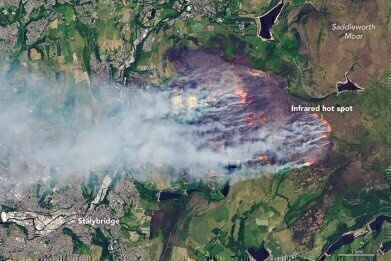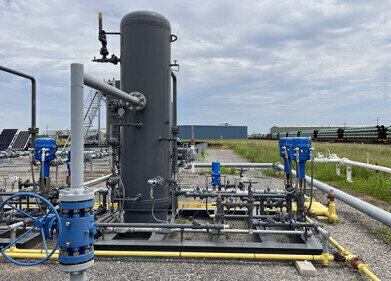Air Clean Up
How Bad Is Pollution from the Saddleworth Moor Fire?
Jul 25 2018
Although the Saddleworth Moor fire is finally out after burning for well over three weeks, it has already released untold amounts of pollutants into the air in the vicinity. In particular, doctors and health experts are worried about the proliferation of particulate matter (PM) caused by the inferno.
Added to the elevated levels of ozone already present in the Greater Manchester atmosphere, PM can pose serious health risks to human and animal life. As a result, police advised local residents to keep their windows and doors closed while the fire was still raging, and are still encouraging people to exercise caution when near the moor even though it has finally been extinguished.
A hard-fought battle
The Saddleworth Moor fire initially broke out on 24th June, believed to be caused by arson. At its peak, the huge inferno covered seven square miles and it took firefighters over three weeks to put it out, with 100 soldiers from the army even being drafted in at one point to help cope with the blaze.
Thankfully the fire was finally extinguished on 18th July, nearing a full month since it began. The tireless efforts of firefighters, soldiers and volunteers were aided by a long overdue downpour of rain, and the emergency services were eventually able to withdraw.
A long-lasting impact
Unfortunately, the damage wrought by the fire will last far longer and have far further reaching ripples. Not only did the smoke from the fire irritate the eyes, skin and cardiovascular system of Manchester residents while it raged on, but the pollutants which were released during combustion could linger in the atmosphere for some time, causing unquantifiable health problems for the locals.
Sophisticated particulate matter sensors have picked up high concentrations of the pollutant even as far as away as Manchester city centre. PM2.5, so named because of the fact that the particles are less than 2.5 micrometres in diameter (30 times finer than a human hair), is especially dangerous, since it can be inhaled and even infiltrate the bloodstream.
“High levels of particulate matter are being emitted from the large moorland fire in north Derbyshire and are affecting large areas of Greater Manchester,” explained Professor Hugh Coe at the time, who teaches Atmospheric Composition at the University of Manchester. “In the plume, peak concentrations are very high and close to the fire air quality is very poor.”
Double threat
While PM2.5 is one of the deadliest pollutants – it has been widely linked to heart and cardiovascular diseases, as well as causing or exacerbating conditions such as asthma and bronchitis – it is not working alone in the north west. High levels of ozone are combining with the PM to multiply the air pollution and pose an even greater risk to the city’s inhabitants.
Ozone is produced when pollution (caused by cars, factories, aerosols or many other sources) is exposed to strong sunlight. It can cause a wide range of health complications itself and as such, the current state of Manchester’s air is highly concerning. The battle to put out Saddleworth Moor fire might be won, but the war against its after-effects is still ongoing.
Events
Apr 18 2024 Shanghai, China
Apr 22 2024 Hannover, Germany
Apr 23 2024 Kuala Lumpur, Malaysia
Apr 24 2024 Sao Paulo, Brasil
May 05 2024 Seville, Spain














